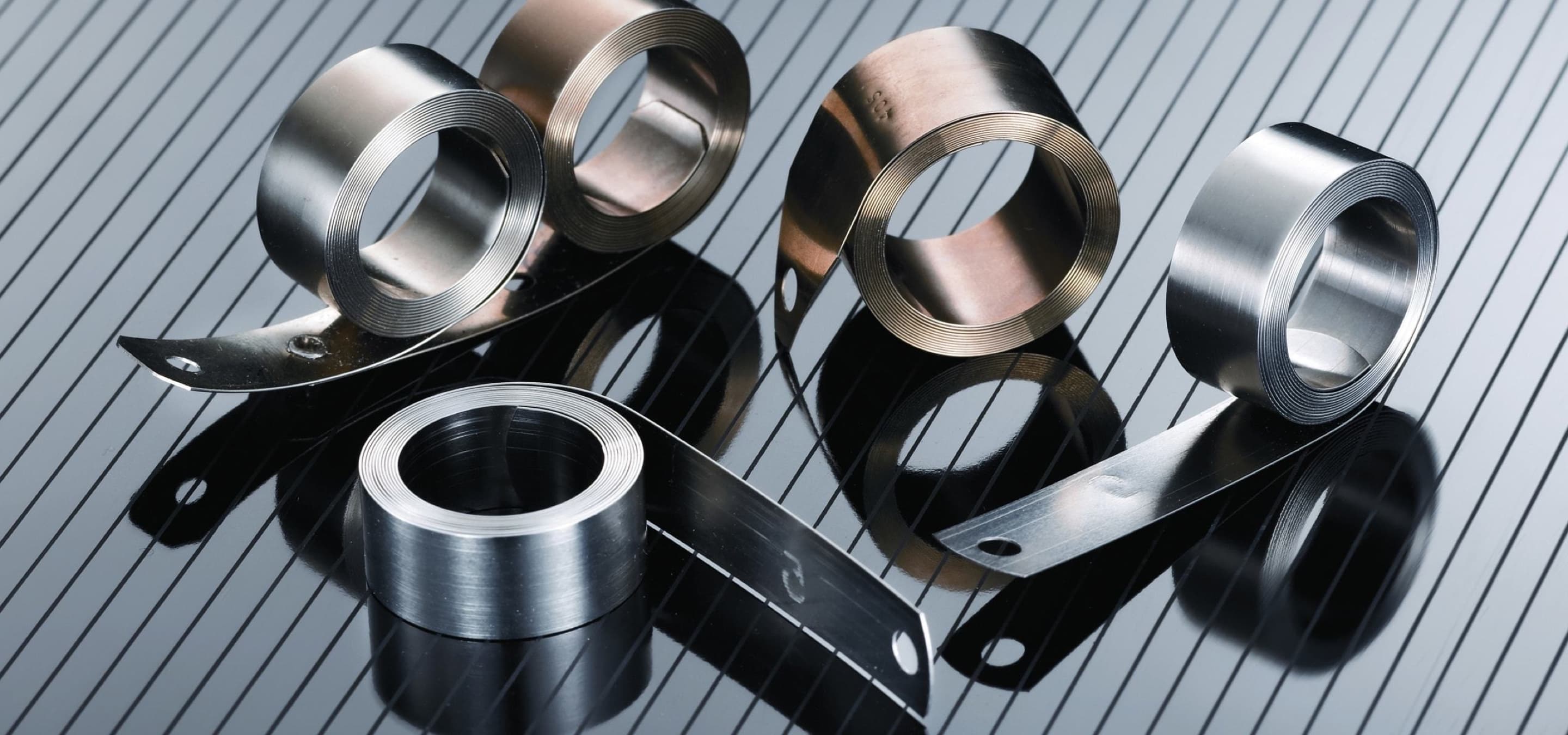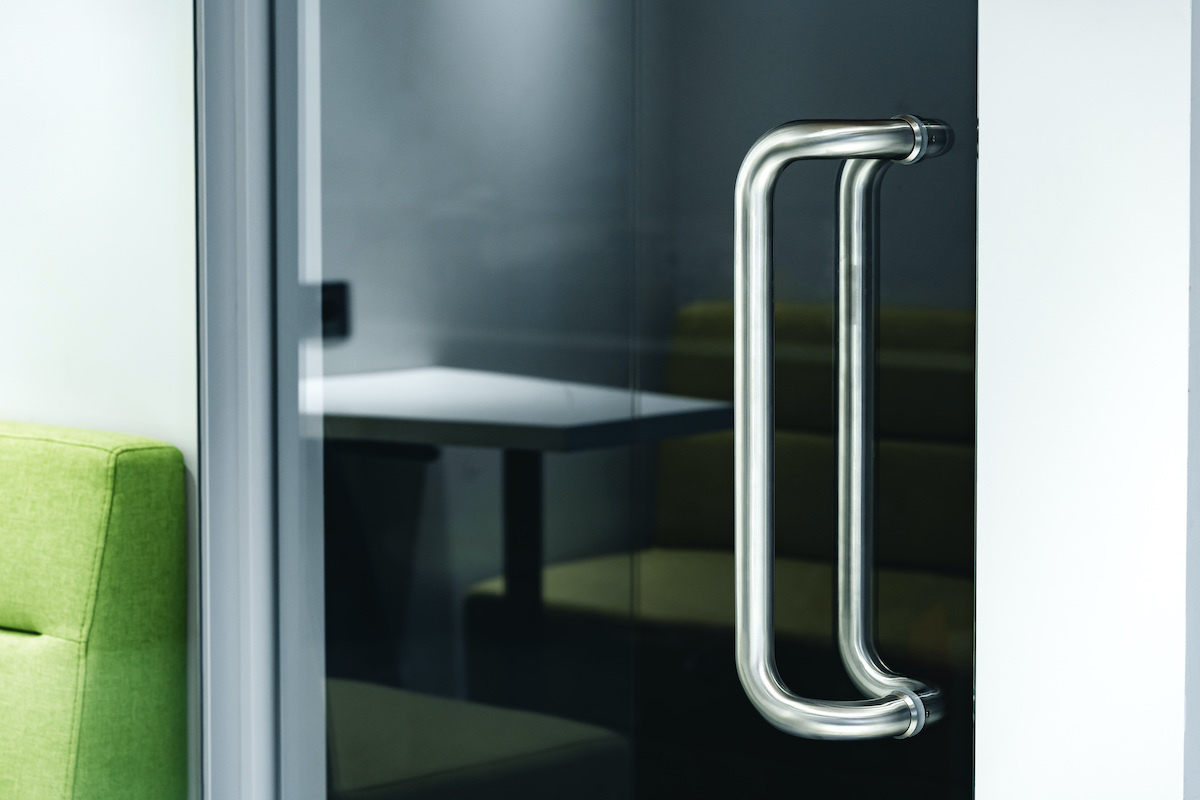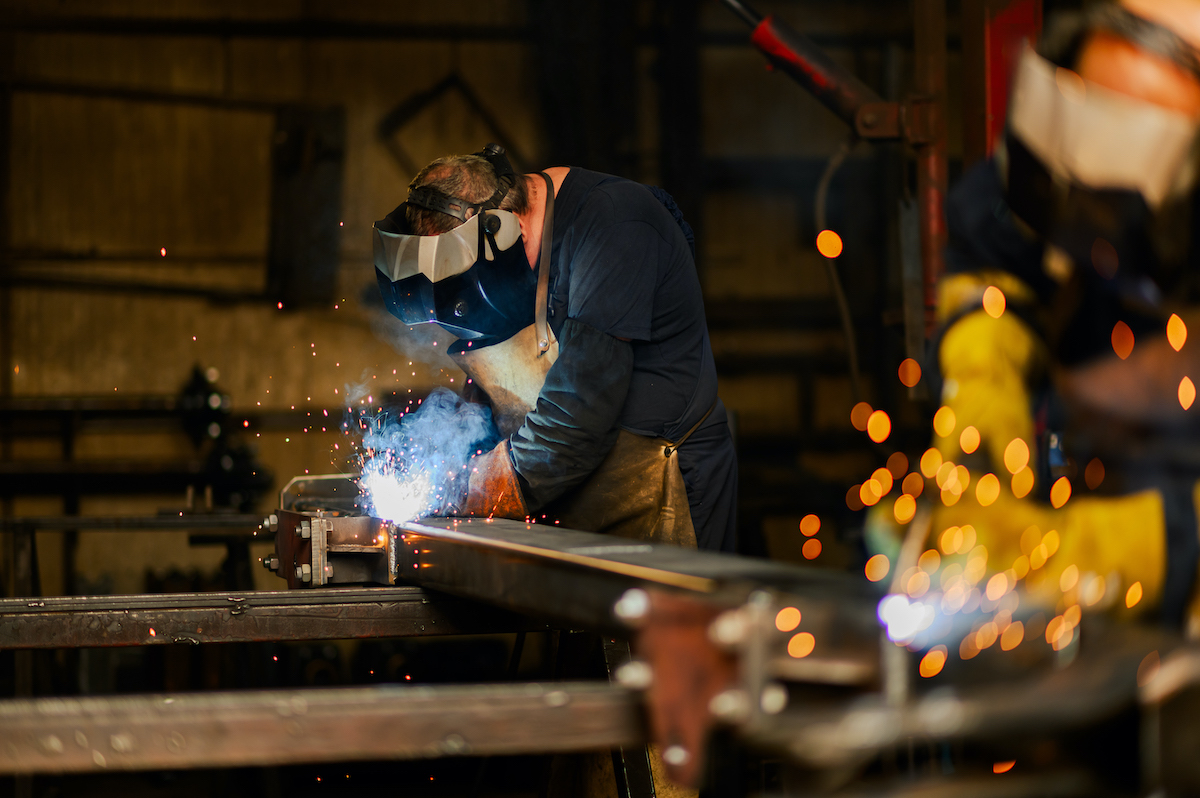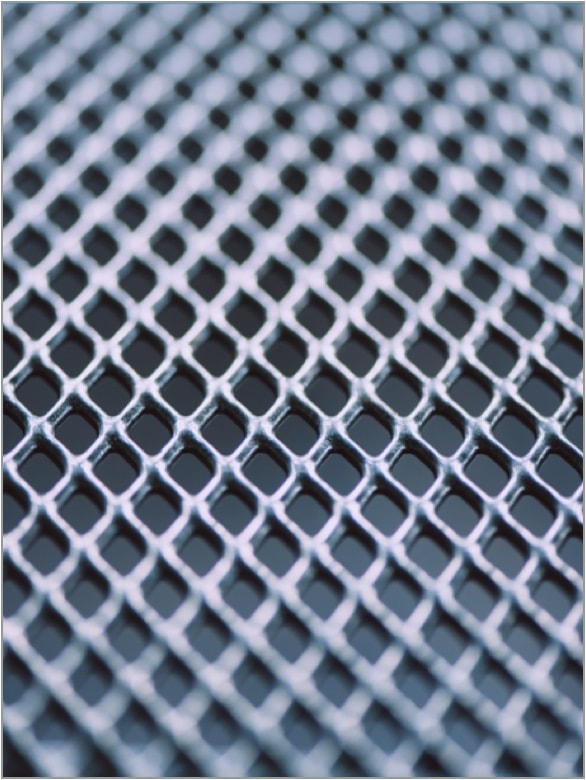The word "Tempered" is frequently used in the metallurgical industry. The most common connotation refers to a hardened material state, or the act of hardening by tempering. If we consider the annealed state, the state after which an alloy has been heated above its recrystallization temperature and soaked until the desired grain size is reached, to be the baseline for the resistance of that alloy, this is how tempering acts on the alloy to increase its strength beyond the annealed state. In the case of Ulbrich Specialty Strip Mill, the action we take on our alloys to temper or harden them is to harden the material by cold rolling.
Cold Rolling
It is a forged metal process that induces cold material or plastic deformation without preheating, by reducing the thickness of a metal coil into strips. This plastic or permanent deformation, induced by the rolling process, causes not only a macroscopic change in the product dimensions, but also a microstructural change resulting in the hardening of the material. To the eyes of someone observing the rolling process, the metal strip moves through two working rollers, one above and one below, and through a combination of vertical force and longitudinal tension, the strip is crushed and made thinner, longer, and stronger. The rest of this article will cover the microscopic phenomena that facilitate these changes.
To understand material hardening, some basic metallurgical concepts must first be understood. The metal alloys manufactured by Ulbrich consist of a series of microscopic crystals called grains, randomly oriented throughout the thickness of the strip. The basic components of an individual grain are the atoms of the elements that form an alloy, such as carbon, iron, nickel, chromium, etc. The grains of an alloy have a thermodynamically preferred repetitive arrangement of atoms, called a unit cell, based on the chemical composition of the alloy. A homogeneous section of metal consisting of a repetitive unit cell forming one or more grains can be called a phase (pattern). Certain families of alloys even have phase names. The 300 series stainless steel alloys are called austenitic because they mainly consist of the austenite phase in the annealed state. Certain 400 series alloys like 430 are called ferritic due to their ferrite phase, while others like 410 and 420 are called martensitic due to their martensite phase. The mechanical properties of an alloy are a function of the existing phases within the alloy, as well as the size and arrangement of the grains of each phase.

(a) Austenite unit cell showing the arrangement of iron (Fe) and carbon (C) atoms
(b) Ferrite unit cell showing the arrangement of iron (Fe) atoms
(c) Martensite unit cell showing the arrangement of iron (Fe) and carbon (C) atoms
So, where does the factor of material hardening influence all this?
In all cases, except for very specialized ones, forged metal products do not consist of a single grain with a perfect crystal structure that repeats everywhere. Like all things in life, metals are imperfect. Everyone knows the phases of water. Gaseous water vapor, liquid water, and solid ice. Just like water, when heated to a high enough temperature, metals melt and even evaporate at extremely high temperatures. The known relations of the constituent elements of an alloy are melted in a huge crucible, mixed into a homogeneous solution, and then poured into ingots of that alloy. When a liquid metal solidifies, unless extreme care is taken to facilitate the precipitation and growth of a single grain, solid grains of the thermodynamically preferred phase will precipitate wherever pressure, temperature, and chemical composition allow. Many grains will precipitate where they can and grow until they meet another grain, at which point a grain boundary is formed.

(a) initial grain precipitation
(b) grain growth
(c) further growth and boundary formation
(d) complete grain structure
Eventually, the entire volume will consist of these randomly oriented grains. This same process occurs when an alloy is annealed, but instead of becoming liquid, the grains dissolve into a solid solution and then recrystallize and grow based on time at temperature and cooling rate, essentially resetting the microstructure. Each time a grain is formed, there is the possibility that one or more line defects, or missing pieces of a crystal structure like a dislocation, will exist. These imperfections, the dislocations in a crystal structure and their subsequent movement along a grain and across grain boundaries are the basis of metal malleability. When all atoms are where they are supposed to be in a crystal structure, there is no room for movement beyond the stretching of atomic bonds and vibrations throughout the structure. When you remove an atom, you create an opportunity for another atom to slide into that place, effectively moving the dislocation. When a force acts on the bulk alloy, the aggregate movement of dislocations in a microstructure allows for plastic deformation without fracture.

(a) Grid with dislocation
(b) Dislocation movement within the grid
(c) Plastically deformed grid
This is where material hardening comes into play. When a force is exerted on the bulk alloy, work is done on it, which means energy is added to the system. If enough energy is added to produce plastic deformation, the crystal networks are strained and new dislocations are formed. This seems like it should increase ductility, because there are more free spaces and, therefore, more potential for dislocation movement. However, when a dislocation encounters another dislocation, they can block or fix each other. As the number and concentrations of dislocations increase, more and more become dislocated, reducing ductility. Eventually, there will be so many dislocations that no more dislocations can be formed as a result of cold work. The existing anchored dislocations cannot move, so the atomic bonds in the network are stretched and stretched until they break, causing a fracture. This is why alloys harden and there is a limit to the amount of plastic deformation a bulk alloy can withstand before it breaks. Cold working an alloy can even change the phase of the microstructure. As energy is added to an austenitic alloy and the microstructure is increasingly strained, some of the austenite will transform into martensite. At room temperature, martensite has higher strength and less ductility than austenite, resulting in a stronger but more brittle condition. It is also the reason why 300 series alloys are not magnetic in the annealed state and increase magnetism with material hardening; austenite is not magnetic, while martensite is magnetic.
The rate at which an alloy strengthens in response to cold work is called the material hardening rate. It is not necessary to observe all the microstructural changes that occur during cold work to predict material performance. When it comes to 300 series stainless steels, or austenitic stainless steel, adjusting the chemical composition can change the material hardening rate. Different elements help to stabilize certain phases and adjusting the amount of these elements can help control the material hardening rate. For example, increasing the nickel content in austenitic stainless steel will decrease the material hardening rate. This is why 301 stainless steel work hardens faster than 304 stainless steel (8-10% nickel). This increase in the material hardening rate means that greater strengths can be achieved without losing as much ductility. If 301 material undergoes the same amount of tension as 304 material, the 301 will end up hardening more due to its higher work hardening rate. This is part of the reason why 301 is preferred for forming operations involving stretching and bending, while 304 can be used for drawing operations where the material is required to flow without hardening and tearing quickly.
Tempering classifications such as full hard and super full hard are not discrete states of strength that a given alloy can achieve. In reality, the strength of an alloy will increase along a curve as a function of the applied tension:
Theoretical tension curve and characteristics

The tensile strength and yield limit of a material are often expressed as a unit of force (psi, Mpa), which is calculated by dividing the applied force by the area of the cross section of the section to which the force is applied. The ductility of a material can be quantified as a percentage of elongation, which is an expression of strain. Strain is calculated by dividing the change in length caused by an applied force, by the total length of the deformed section. The percentage of elongation is an expression of the strain at fracture as a percentage: [(final length - initial length) / initial length] x 100. It represents how much a material can be stretched beyond its original dimension without breaking. Metals do not always deform plastically in response to stress. The steep region of the curve at lower strains is called the elastic zone because it represents non-permanent or elastic deformation. A section of metal can stretch a certain amount without plastically deforming, which means that once the applied force is removed, that section will return to its original dimensions. Understanding the size of the elastic zone of a curve is important in metal forming because the elasticity of a material will translate into elastic recovery. The more stress a material can perform without plastically deforming, the more spring back effect there will be.
Elastic vs plastic deformation.

In the plastic column, the difference in position between the paper clip arm in the "applied force" image and the "final state" image is often called "elastic recovery".
Tempering classifications are accepted nomenclatures throughout the metals industry to facilitate parts manufacturers ordering material with consistent and predictable mechanical properties. The American Society for Testing and Materials, or ASTM, writes and publishes specifications to define tempering. Ulbrich customers often consult the ASTM A666: Standard Specification for Annealed or Cold Worked Austenitic Stainless Steel Sheets, Strips, Flat Plates, and Bars, when selecting a material and temper for a formed part. ASTM A666 provides the mechanical property requirements for 200 and 300 series alloys for the following conditions, from softest to hardest respectively: Annealed, 1/16 hard, 1/8 hard, ¼ hard, ½ hard, ¾ hard, full hard, and super full hard. The specification details the requirements for almost all alloys from 1/16 to ½ hard, but for ¾ hard and full hard, only type 201, 205, 301, 302 steels have specific properties. In super full hard, the only alloys included in the table are 301 and an alloy that is specified exclusively for super full hard: 301SI. UNS S30116, or 301SI, can achieve any of the lower tempering. The reason why it is not specified for them is that 301 has a more predictable work hardening rate in that range. 301SI was specifically designed for high temperature applications such as springs, fasteners, washers, zippers, clips, and clamps. Normal 301 has a maximum silicon content of 1%, while 301SI has a minimum silicon content of 1% and a maximum of 1.35%. Additions of carbon, manganese, and silicon increase the strength of austenitic stainless












